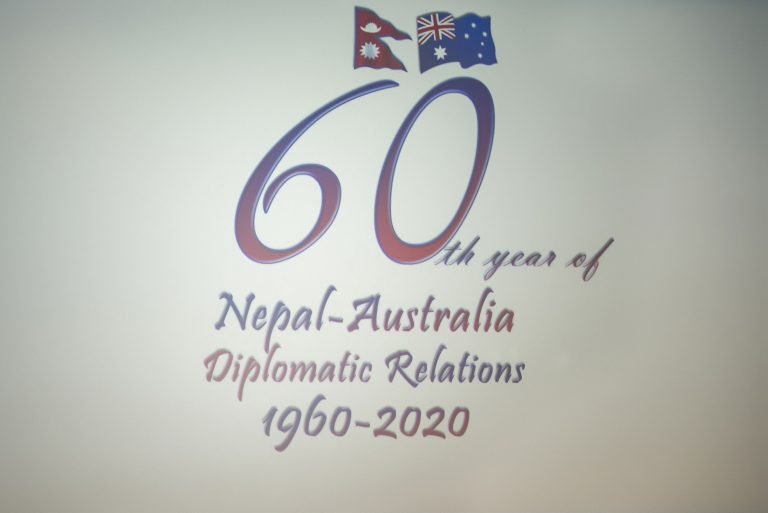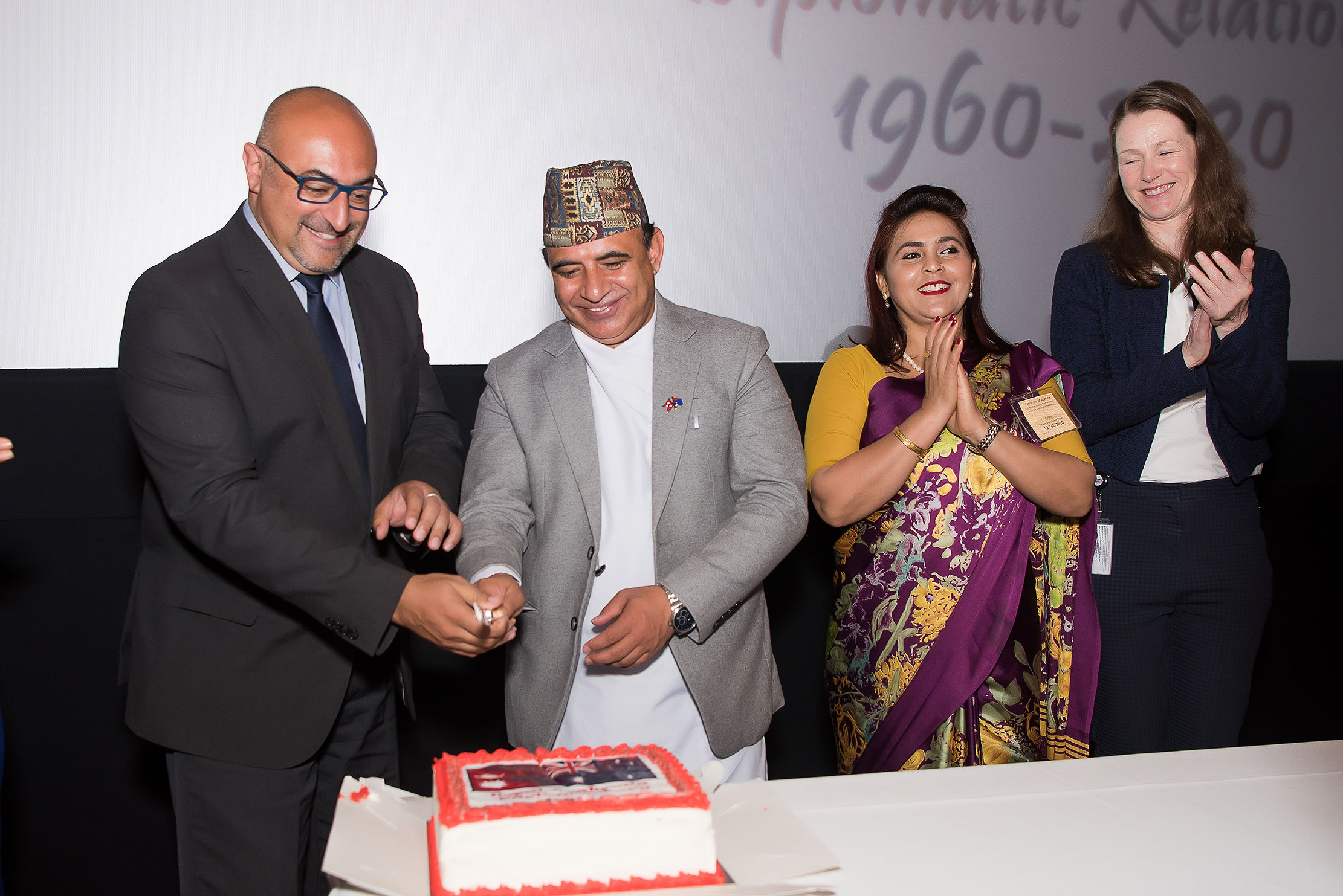
By Ashmita Rijal
The fact that Nepal and Australia are geographically distant has never been a barrier for the two nations to become great friends. The friendship between the two nations, which has reached 60 glorious years, is as sturdy as the Himalayas and as wide as the vast Outback – 60 years of mutual cooperation and friendship resulting in growth in bilateral relations and economic and technical cooperation between the two countries.
The Nepali Embassy in Canberra hosted a reception on February 10 at the Australian Parliament House in Canberra to mark the 60th year of the establishment of diplomatic relations between Nepal and Australia.
Members of the Parliament, senior officials of the Department of Foreign Affairs and Trade, heads of diplomatic missions based in Canberra and members of the diplomatic corps, former ambassadors of Australia to Nepal, representatives of the Australian Non-Government Organizations and members of the Nepali diaspora participated in the program.

Over the past 60 years, the two nations have stood by each other during difficult times such as the 2015 Earthquake of Nepal and the recent bushfires in Australia – both times extending their support to each other.
Although, diplomatic relations between Nepal and Australia officially began from 15th February, 1960 – Nepal and Australia have a shared relation with each other since earlier. In 1915, during the Gallipoli campaign, Gurkha soldiers from Nepal fought alongside the ANZACS – a contribution which is remembered fondly by Australia. Till date, every year on ANZAC Day, Gurkhas and their families participate in the NAZAC Parade and the commemorative service.
In 15th February, 1960, diplomatic relationship between the two countries was officially established during the leadership of then Nepali King Mahendra Bir Bikram Shah and then Australian Prime Minister Robert Menzies.
Australia opened its residential embassy in Kathmandu in 1984. H.E. Peter Budd is the current Ambassador of Australia to Nepal, and is often seen sharing his love for Nepal through the photographs of places he has been to and his cultural experiences in Nepal.
I think I just lost my phone. #VisitNepal2020 #chitwan #NepalNTNC pic.twitter.com/xDwZAs0ZjY
— Pete Budd (@AusAmbNP) January 30, 2020
Similarly, Nepal established its residential embassy in Canberra in March, 2007, and formally inaugurated the same in September, 2007.
Interestingly, the first non-resident Nepali Ambassador to present credentials in Australia was H.E. Bharat Rajbhandari, who was based in Tokyo. He presented his credentials on 30 March, 1966 to then Governor General of Australia Richard Casey.
Likewise, the first Australian Ambassador (also non-resident) was H.E. Walter Crocker. He presented his credentials on 31 August, 1960, the same year Nepal and Australia established diplomatic relations.
The relationship between Nepal and Australia is not just limited to diplomacy, but extends to trade, foreign direct investment and tourism. Nepal exports tea, coffee, essential oils, articles of leather, clothing, floor covering, carpet, cotton dress, paintings and pastels to Australia and imports refined petroleum, dairy products, beverages, spirits and vegetables.
Meanwhile, Australia is the tenth largest investor for Nepal in terms of number of industries. Australia has also invested in 48 different industries, service sectors and other fields amounting to Rs. 491.27 million. The investment has helped create thousands of jobs in Nepal.
Nepal’s natural abundance and cultural elements are key attractions for Australian tourists –they come in for a hike, a trek in the Himalayas, go off on a jungle safari and engage in adventure sports. A total of 33,000 Australians visited Nepal in 2019, a number which is expected to grow in 2020 and the years to come.
The Australian Government and the private sector have contributed to the economic and social development of Nepal. They have assisted Nepal in the fields of health, education, hydroelectricity, sustainable management of forest, agriculture, strengthening governance and service delivery, civil aviation, and livestock management.
Thousands of students each year choose Australia as their destination for further studies – from October 2018 to October 2019, 65,746 Nepali students enrolled in tertiary studies in Australia. According to reports, Nepali students contributed more than 1.5 billion to the Australian economy in the same period.
Many of the students return home to contribute towards the development of Nepal, while many choose to stay in Australia and be a part of Australia’s dynamic work force.
The Nepali community is one of the fastest growing communities in Australia – as of 4th January, 2020, there are 62,724 Permanent Residents and Australian Citizens of Nepali origin residing in Australia. The Diaspora is spread across all states of Australia, with concentrated numbers in NSW and Victoria.
The Nepali Diaspora is also an important element of Australia’s multicultural identity – most recently were seen participating in Australia Day Parades across the nation.
The Nepali community also enthusiastically participates in the Pako Festa – A Celebration of Cultural Diversity.
Nepal and Australia are friends during good and bad times – for example, in 2015, during the earthquake, the Australian government provided support to the victims of 2015 earthquakes and to the affected people of Nepal under humanitarian assistance and for the reconstruction of the damaged property.
Similarly, when the devastating bushfires affected the Australia, its people, its ecosystem and its wildlife, Nepal government expressed its solidarity – separate messages were issued by the President and the Foreign Minister, both of whom expressed their heartfelt sympathies along with a message of support and strength.




